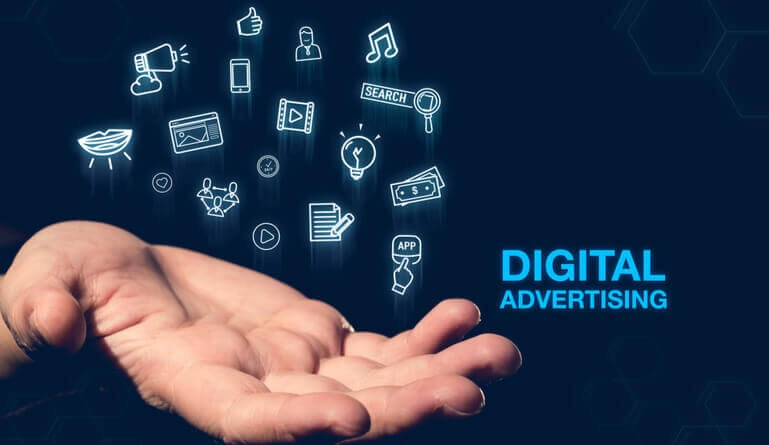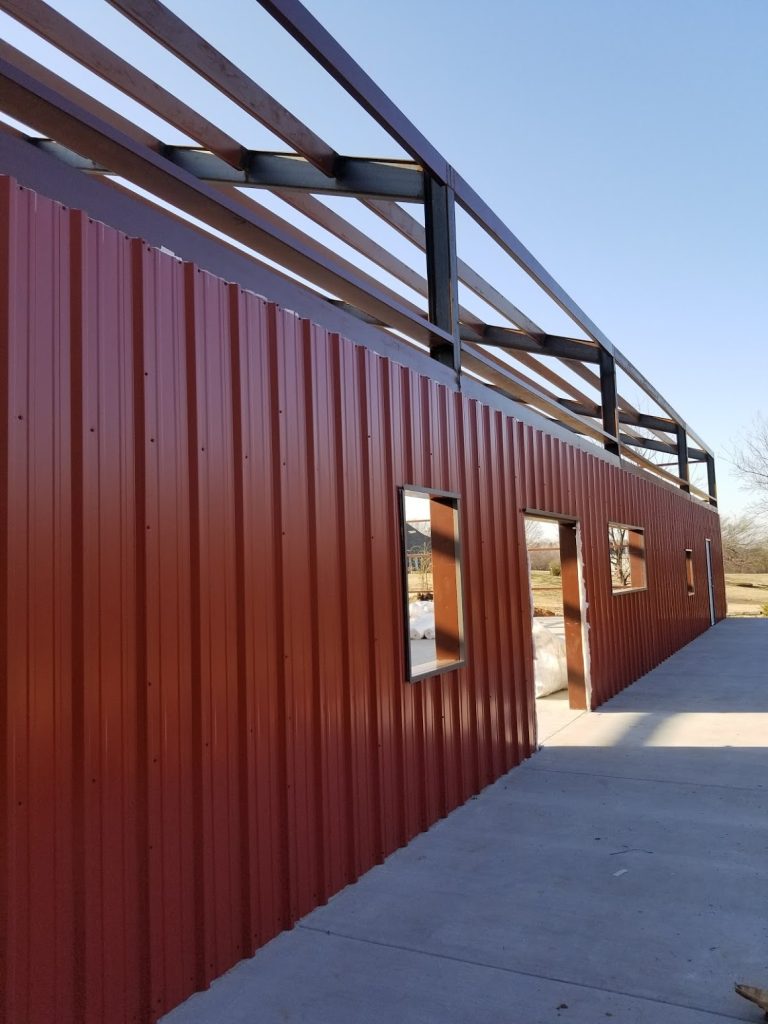Automated printers have revolutionized the printing industry by significantly enhancing production speed while maintaining high-quality standards. These advanced machines are equipped with cutting-edge technology that allows for rapid printing without the risk of compromising precision or clarity. Traditional printing methods often require extensive manual intervention, which can slow down the process and lead to inconsistencies. In contrast, automated printers operate with minimal human input, ensuring efficiency and uniformity in every print job. Their ability to handle high volumes of work within short time frames makes them indispensable for businesses that demand fast turnaround times without sacrificing quality. One of the key advantages of automated printers is their precision in ink distribution and alignment. They utilize sophisticated software and high-resolution printheads that meticulously control the placement of ink or toner on various surfaces. This ensures that even the most intricate designs and detailed text appear sharp and vibrant. The integration of artificial intelligence and machine learning further enhances these printers’ ability to detect and correct errors in real-time, reducing wastage and improving overall output. With such capabilities, businesses can confidently produce professional-grade materials without the need for constant supervision or rework.
In addition to speed and precision, Kete automated printers offer significant cost savings. By reducing the dependency on manual labor, companies can allocate resources more efficiently and lower operational expenses. The automation process also minimizes material waste, as advanced sensors and control mechanisms ensure optimal usage of ink, paper, or other printing materials. This not only contributes to economic efficiency but also supports environmentally sustainable practices by reducing excess consumption and waste disposal. As industries increasingly focus on sustainability, automated printers provide an eco-friendly solution without compromising performance. Versatility is another remarkable feature of automated printers. They can seamlessly adapt to different printing requirements, whether it be large-scale commercial printing, customized packaging, or high-quality textile printing. Their ability to switch between different materials, sizes, and finishes allows businesses to meet diverse market demands with ease. This adaptability is particularly beneficial for industries that require consistent branding, such as publishing, marketing, and product packaging.
With automated printers, companies can produce high-quality prints across various mediums, maintaining a strong visual identity in competitive markets. Furthermore, automated printers contribute to workplace efficiency by streamlining workflows and reducing downtime. Unlike traditional printers that may require frequent maintenance and manual adjustments, automated systems are designed to function continuously with minimal interruptions. Many models come with self-cleaning mechanisms and predictive maintenance features that identify potential issues before they become major problems. This ensures that printing operations run smoothly, meeting tight deadlines without unexpected delays. Overall, automated printers have transformed the way businesses approach printing, offering a perfect blend of speed, quality, and efficiency. By leveraging automation, companies can meet increasing production demands while maintaining superior print quality. As technology continues to advance, automated printing solutions will only become more sophisticated, further optimizing the printing industry for the future.
In industrial applications, safety and performance are crucial factors that determine the efficiency and reliability of machinery. Pneumatic cylinders, widely used in various sectors such as manufacturing, automotive, aerospace, and packaging, play a significant role in ensuring smooth and controlled motion. Leading pneumatic cylinder manufacturers are continuously innovating to enhance the safety, durability, and performance of their products, addressing industry demands for higher efficiency, precision, and reliability. One of the key advancements in pneumatic cylinder technology is the integration of improved materials and coatings that enhance durability and resistance to harsh environmental conditions. Manufacturers are now using corrosion-resistant stainless steel, anodized aluminum, and specialized coatings to protect against wear, moisture, and extreme temperatures. This ensures a longer lifespan for the cylinders, reducing maintenance costs and downtime in industrial operations. Additionally, self-lubricating seals and composite materials further improve operational efficiency by minimizing friction and extending service life.

Safety remains a top priority for industries utilizing pneumatic cylinders, and manufacturers are incorporating advanced safety features to prevent accidents and equipment failures. One such innovation is the use of cushioning technology, which absorbs impact forces and reduces sudden movements, preventing damage to machinery and reducing workplace hazards. Additionally, manufacturers are integrating sensors and electronic feedback systems into pneumatic cylinders, allowing real-time monitoring of position, speed, and pressure. These smart cylinders help detect potential failures early, enabling predictive maintenance and reducing the risk of unexpected breakdowns. Energy efficiency is another critical aspect that manufacturers are addressing to optimize industrial operations. Traditional pneumatic systems often experience energy losses due to leakage and inefficiencies in air compression. To overcome this, hebai pneumatic cylinders are designed with precision-engineered seals, improved valve technology, and optimized airflow control to minimize energy waste.
Additionally, advanced flow control mechanisms allow for precise adjustments, reducing unnecessary air consumption and lowering overall operational costs. Some manufacturers are also integrating hybrid systems that combine pneumatics with electromechanical components, offering greater efficiency and performance control. Manufacturers are now offering modular pneumatic cylinders that can be easily configured to meet specific application requirements. These modular designs allow for quick assembly and integration into existing systems, reducing downtime during installation and maintenance. Furthermore, specialized cylinder designs, such as compact, rodless, and guided cylinders, cater to unique industry needs, enhancing functionality and space efficiency in complex machinery. Leading pneumatic cylinder manufacturers are continuously innovating to enhance the safety, efficiency, and reliability of their products in industrial applications. Through advancements in materials, smart technology integration, energy-efficient designs, and customizable solutions, these manufacturers are helping industries achieve higher productivity while ensuring safer working environments. As automation and smart manufacturing continue to evolve, pneumatic cylinder manufacturers will remain a vital component in driving industrial progress.
Transforming a space with high-quality painting and decorating is one of the most effective ways to bring your vision to life. Whether you are revamping a residential home or enhancing the atmosphere of a commercial setting, professional painting and decorating services can turn any area into a stunning environment. The right choice of colors, textures, and finishes not only boosts the aesthetic appeal of a space but also creates the desired mood, whether it is calm and serene or energetic and vibrant. The first step in a successful painting and decorating project understands your vision. Professionals take the time to consult with you, offering expert advice to help you select the best colors and finishes that align with your goals. Whether you are aiming for a sleek, modern look or a more traditional, cozy vibe, they will guide you in making informed decisions. Customizing the design to your personal style is essential, and skilled decorators ensure that the final result reflects your preferences.

Quality preparation is key to achieving a smooth, flawless finish. Experts in the field know that proper surface preparation can make all the difference between a mediocre job and a truly remarkable one. This includes cleaning, sanding, filling cracks, and priming the surfaces. With meticulous attention to detail, they ensure that every surface is ready to receive the paint or wallpaper. This professional touch not only improves the longevity of the finish but also enhances the overall look of the room. When it comes to technique, a skilled Toms Decor team uses a variety of methods to apply paint and wallpaper with precision. They understand the nuances of each material and are adept at using brushes, rollers, or spray equipment to achieve the perfect coat. In addition to traditional paint finishes, high-quality decorators can apply specialized techniques such as faux finishes, murals, or intricate wallpaper patterns, bringing a unique touch to any setting.
The right application ensures that the surfaces are even and long-lasting, preventing issues like streaks or peeling over time. An often-overlooked benefit of professional painting and decorating services is the efficiency they bring to a project. Experienced decorators work swiftly while maintaining the highest quality standards, ensuring that deadlines are met without compromising on the final result. This is particularly valuable for commercial spaces that need minimal disruption to daily operations. By choosing professionals, you can be confident that the job will be completed on time and to your specifications, allowing you to enjoy your revamped space sooner rather than later. A high-quality paint job or decorating project can significantly increase the value of your property. Whether you are looking to sell or simply want to enjoy an improved living or working environment, the aesthetic enhancements provided by professional decorators can have a lasting impact.
In today’s fast-paced digital world, efficiency and convenience have become crucial elements of everyday life, especially when it comes to handling documents, notes, and information that need to be transcribed. Manual typing, once the primary method of transferring data from physical to digital formats, can be a time-consuming and error-prone process. With the advent of technology, however, the need to type manually is rapidly diminishing, thanks to innovations such as image-to-text converters. These tools, which utilize Optical Character Recognition OCR technology, are revolutionizing the way we interact with written content. They offer a seamless and accurate way to extract text from images, photos, and even scanned documents. An image-to-text converter works by analyzing an image and identifying the characters, words, and sentences present in it. The software then converts these elements into editable, searchable, and often exportable text formats. The process relies on sophisticated algorithms that can decipher printed or handwritten text from a wide range of sources.

Whether the image is a photo of a typed document, a scan of a book, a screenshot of a handwritten note, or a picture of a street sign, these converters can efficiently process the visual data and transform it into a digital text output. One of the most significant benefits of image-to-text converters is the time-saving aspect. In the past, if you needed to transfer handwritten notes or printed documents into a digital format, it would take hours of painstaking typing. With image-to-text converters, this process becomes nearly instantaneous. A quick snapshot of a document, followed by a few clicks, can result in the entire content being available in a digital, editable format. This technology is especially useful for students, researchers, and professionals who often need to transcribe large amounts of text or pull data from various sources. Another major advantage of using an image-to-text converter is the accuracy and reliability of the output. OCR technology has come a long way in recent years, and modern converters are incredibly efficient at recognizing and extracting text. Even complex fonts or handwriting that would have been difficult to read for a human can often be interpreted by advanced OCR software.
This accuracy can help to eliminate human errors that are common when typing long documents. Additionally, image-to-text converters can also correct mistakes in the original document, such as misprints or illegible words, improving the overall quality of the transcribed text. For instance, someone who is blind or has low vision can use an image-to-text converter in conjunction with a screen reader to hear the contents of a document. Similarly, these tools can be helpful for those who struggle with dyslexia, as they can convert images into clearer, more legible digital text. Furthermore, image-to-text converters enhance the ability to search and organize Image text recognition online information. Once the text is extracted from an image, it becomes fully searchable, allowing users to locate specific information within the document quickly. Despite the many advantages, image-to-text converters are not without limitations. While modern OCR technology is highly accurate, it is not perfect.
The quality of the image plays a significant role in the accuracy of the text conversion. Low-resolution images, blurry photos, or text that is distorted due to poor lighting or other factors can result in errors in the converted text. In addition, handwritten text can sometimes pose a challenge for OCR software, especially if the handwriting is messy or highly stylized. However, as OCR technology continues to improve, these issues are expected to diminish over time. In conclusion, image-to-text converters have become an invaluable tool in today’s digital age. By eliminating the need for manual typing, they save time, reduce errors, and enhance the accessibility and organization of information. Whether you are a student, professional, or someone simply looking to streamline your workflow, these tools can significantly boost productivity. As the technology continues to evolve, we can expect image-to-text converters to become even more accurate and versatile, further transforming the way we handle and interact with written content.
Digital advertising screens have become an increasingly popular tool for businesses looking to amplify their brand presence in today’s competitive market. These dynamic displays offer a modern approach to traditional advertising by engaging consumers in real time with captivating visuals and messages. The versatility of digital screens allows brands to target specific locations, audiences, and times, making them an invaluable asset in any marketing strategy. As people become more accustomed to digital experiences, businesses can leverage these technologies to create memorable and impactful campaigns that resonate with their audience. One of the primary benefits of digital advertising screens is their ability to deliver content with eye-catching visuals and interactive elements. Unlike static billboards, digital screens can display moving graphics, videos, and animations, all of which contribute to a more engaging and entertaining experience. This type of content has a greater potential to capture attention, making it an effective way to stand out in a crowded marketplace.

By utilizing bright colors, innovative animations, and personalized messaging, brands can significantly enhance their visibility and ensure that their messages make a lasting impression. The flexibility of digital advertising is another major advantage. Advertisers can quickly update their campaigns and messages, adjusting content in real time based on audience feedback or market trends. This ability to make rapid changes means brands can react to current events or adapt their messaging to reflect seasonal promotions or special offers. Furthermore, digital advertising screens offer precise targeting, allowing businesses to tailor their messaging to specific locations or demographic groups, ensuring that their content is relevant to the people most likely to engage with it. One of the most significant advantages of digital advertising screens is their ability to provide real-time data and analytics. Marketers can track the performance of their campaigns by monitoring metrics such as views, interactions, and engagement rates.
This data allows businesses to gain valuable insights into what is resonating with their audience and adjust their strategies accordingly. Over time, this ability to measure and optimize campaigns helps brands maximize their return on investment, ensuring that their digital advertising efforts are as effective as possible. Another key benefit of using digital advertising screens is the potential for increased brand awareness. With their large, attention-grabbing displays, these screens help businesses create a strong presence in high-traffic areas. Whether in shopping malls, airports, or city centers, digital advertising screens ensure that a brand’s message reaches a broad audience. As people move through these areas, they are more likely to notice digital displays, which can lead to increased recognition and recall. Consistent exposure to a brand’s message strengthens its identity and contributes to greater consumer trust and loyalty over time.
In the modern world, packaging plays a crucial role in preserving the quality of food while also enhancing its presentation. Cake boxes, in particular, are an essential item for bakeries, cake shops, and even home bakers who want to ensure their products reach customers in pristine condition. As the demand for eco-friendly and cost-effective packaging solutions grows, leading cake box manufacturers are stepping up by offering high-quality paper food containers wholesale services online. These manufacturers understand the needs of the food industry, and their online platforms make it easier for businesses to access a wide variety of paper-based packaging solutions. The rise of e-commerce has transformed the way businesses source their packaging materials. With the click of a button, cake shops and food manufacturers can now order paper cake boxes and other food containers from top-tier manufacturers who specialize in wholesale services. These companies offer an array of options, including custom-designed cake boxes, standard-sized boxes, and eco-friendly alternatives. The ability to purchase in bulk not only provides cost savings but also ensures that businesses can maintain a steady supply of packaging materials to meet demand, especially during peak seasons like holidays and special events.
Paper food containers, such as cake boxes, are increasingly favored due to their versatility and environmental benefits. Unlike plastic or foam alternatives, paper boxes are biodegradable and recyclable, making them a more sustainable option for food packaging. Leading cake box manufacturers offer paper containers that are durable enough to protect cakes and other baked goods during transport, yet lightweight for easy handling. These boxes paper food containers wholesale is designed to retain their structural integrity, even when carrying heavier cakes, and are available in a variety of sizes to accommodate different cake types, from simple round cakes to elaborate tiered designs. Many top manufacturers also offer customization services, allowing bakeries and cake shops to print their logos, brand names, or special messages on the boxes. Custom cake boxes not only provide added protection for baked goods but also serve as a powerful marketing tool. With attractive designs and high-quality printing, a branded cake box can leave a lasting impression on customers and help boost brand recognition. This option is especially valuable for businesses looking to distinguish themselves in a competitive market.
In addition to providing quality cake boxes, leading manufacturers also offer comprehensive wholesale services, allowing businesses to place large orders at competitive prices. Ordering online makes the process even more convenient, with many manufacturers offering fast shipping and flexible delivery options. This is particularly important for bakeries that require packaging for a large volume of orders. Furthermore, online platforms often provide easy access to product catalogs, customer reviews, and bulk pricing information, making it simpler for businesses to make informed purchasing decisions. As businesses continue to prioritize eco-friendly and cost-effective solutions, partnering with leading cake box manufacturers offering paper food containers wholesale services online is a smart choice. With a focus on sustainability, durability, and customization, these manufacturers provide the packaging solutions that bakeries and food producers need to enhance their products’ presentation and protect their quality during transportation. By taking advantage of online wholesale services, businesses can not only save money but also ensure their customers receive their delicious products in the best possible condition.
When it comes to expired cooking oils, many people tend to simply dispose of them by dumping them down the drain or in the trash. However, this is not only wasteful, but also harmful to the environment. There are better ways to discard expired oils that are more responsible and environmentally friendly. First and foremost, it is essential to understand that used or expired cooking oils, whether vegetable oil, olive oil, or animal fats, should never be poured down the drain or toilet. When oils are poured down the drain, they can solidify and cause blockages in pipes, leading to costly plumbing issues. In addition, the oils can make their way into the water system, contributing to water pollution. This contaminates both freshwater and marine environments, harming aquatic life and disrupting ecosystems. Similarly, throwing expired oil in the trash is not an ideal solution.
While it may seem like a simple option, olie inleveren zakelijk can seep into the ground, potentially contaminating the soil and groundwater. This can lead to long-term environmental damage, affecting plants, wildlife, and even human water supplies. So, how should you properly discard expired oils? One of the most eco-friendly methods is to recycle the oil. Many cities and municipalities offer recycling programs that accept used cooking oil. These programs either convert the oil into biodiesel or repurpose it in other ways. Biodiesel, a renewable energy source, can be produced from cooking oils and used to fuel vehicles and machinery. If there is a local recycling facility near you, contact them to find out the best way to dispose of used oils. Another way to handle expired oils is to reuse them. If the oil has only been used once and has not gone rancid, it can be filtered and stored for future cooking.
Simply strain the oil through a fine mesh or cheesecloth to remove food particles, and store it in a clean, airtight container. Keep in mind that reused oil should be kept in moderation, as oils degrade with each use. If you are uncertain whether the oil is still good, check its appearance, smell, and texture before using it again. If you cannot recycle or reuse the oil, there are alternative disposal methods to consider. Some pet shelters and farms accept used cooking oil, as it can be used to feed animals or for composting. However, it is essential to check with the organization beforehand to ensure they are willing to accept the oil and understand how to handle it safely. For small amounts of expired oil, you can also soak it up using absorbent materials like paper towels, sand, or kitty litter, and then dispose of it in the trash. However, this should only be done in small quantities.
Your wedding day is one of the most cherished moments of your life a celebration of love, commitment, and the beginning of a beautiful journey together. However, the planning process can often feel overwhelming, with countless details demanding attention and decisions to be made. From selecting the perfect venue to coordinating décor, catering, and entertainment, it is easy to feel lost amidst the flurry of tasks. That is where our experienced event planners come in, ensuring your dream wedding unfolds effortlessly and stress-free. Our team of expert wedding planners specializes in transforming your vision into reality. Whether you have dreamed of an intimate garden ceremony, a glamorous ballroom event, or a rustic destination celebration, we work closely with you to bring your unique ideas to life. We begin by understanding your preferences, budget, and priorities, creating a personalized plan that captures the essence of your love story. With meticulous attention to detail and a commitment to excellence, we ensure every aspect of your wedding reflects your style and personality.
One of the key benefits of hiring our experienced planners is their ability to alleviate stress. Wedding planning involves juggling multiple vendors, timelines, and budgets a daunting task for anyone. Our planners take on these responsibilities, acting as your advocates and liaisons. They manage vendor negotiations, ensure seamless communication, and handle unexpected challenges with poise and professionalism. This allows you and your partner to focus on what truly matters enjoying the journey and cherishing the special moments leading up to your big day. Our extensive network of trusted vendors and venues is another advantage of working with us. From florists and photographers to caterers and musicians, we collaborate with top-tier professionals who share our dedication to quality and creativity. Our planners curate a cohesive team that aligns with your vision, ensuring every element of your wedding is executed flawlessly. Additionally, our insider knowledge of industry trends and best practices allows us to offer innovative ideas and cost-effective solutions, maximizing the value of your investment.
On the day of your wedding, our planners are your behind-the-scenes heroes. They oversee every detail, from the setup and décor to the timing of each event, ensuring everything runs smoothly. Should any last-minute issues arise, they handle them discreetly, leaving you free to immerse yourself in the joy of the occasion. With our team managing the logistics, you can walk down the aisle with confidence and peace of mind, knowing your dream wedding is in expert hands. Planning your Cristina Verger NYC wedding planner wedding should be a joyous and memorable experience, not a source of stress. With our experienced event planners by your side, you can savor the excitement and anticipation without the burden of logistics. Let us take the reins and guide you through every step of the process, creating a celebration that you and your loved ones will cherish forever. Contact us today to begin planning the wedding of your dreams, and rest assured that your special day will be as magical and stress-free as you have always imagined.
When it comes to protecting your property, whether it is your home, business, or any valuable assets, reliable private security services offer peace of mind and safeguard your interests. These services are not just about having someone physically present to deter crime, but they are also about employing a strategic approach to mitigate risk and enhance overall security. By integrating technology, highly trained personnel, and personalized security plans, private security services can address the specific needs of different environments. One of the primary benefits of professional security services is the deterrence factor. Security personnel, whether in uniform or plainclothes, serve as a visible deterrent to potential criminals. Their presence alone significantly reduces the likelihood of crimes such as theft, vandalism, and trespassing. Many services also incorporate advanced surveillance systems, such as cameras, alarms, and motion sensors, which can alert both the security team and property owners to any suspicious activities in real-time. This combination of human and technological resources creates a formidable defense against crime.
In addition to crime prevention, hammer head security services offer a wide range of other protections. For example, they can conduct regular patrols of the premises, monitor alarm systems, and perform safety audits to identify vulnerabilities in the property. A well-designed security strategy will take into account factors such as location, building structure, and the nature of the assets being protected. Whether it is a high-end residential neighborhood or a commercial business, security services can tailor their approach to address unique challenges and needs. Furthermore, private security personnel are trained to handle emergencies effectively. Whether it is a medical situation, fire, or any other unexpected event, these professionals are equipped to respond promptly and appropriately. In cases where law enforcement needs to be involved, security personnel can assist in coordinating with authorities and providing necessary documentation or evidence, making the entire process smoother and more efficient.
For businesses, the protection of intellectual property, sensitive information, and physical assets is essential. Private security services can also help with access control, ensuring that only authorized individuals have access to certain areas of the building. This is particularly important for businesses dealing with confidential data or high-value goods. Additionally, security services can offer risk management consultations to help identify potential security threats and develop proactive strategies to mitigate them. Overall, investing in reliable private security services is a proactive and effective way to protect your property and ensure the safety of your family, employees, and assets. With the right blend of personnel, technology, and expertise, you can be confident that your property is in safe hands, allowing you to focus on other important aspects of your life or business.
When it comes to meeting the most demanding building requirements, high-strength metal construction solutions stand as a pillar of reliability and durability. In today’s rapidly evolving construction landscape, where efficiency, safety, and structural integrity are paramount, metal materials offer unmatched performance across a wide range of applications. Whether you are constructing towering skyscrapers, large-scale industrial facilities, or complex infrastructure projects, high-strength metal alloys such as steel, titanium, and aluminum are essential for ensuring the stability and longevity of structures. These materials provide superior load-bearing capacity, resistance to harsh environmental conditions, and the ability to withstand extreme stresses, making them ideal for projects where conventional building materials might fall short. High-strength metals offer several advantages over traditional construction materials like wood or concrete.
For starters, they have a much higher strength-to-weight ratio, allowing for lighter frameworks that still offer immense strength and resilience. This characteristic is especially crucial in structures subjected to seismic forces, heavy winds, or extreme weather conditions, as high-strength metals can absorb and distribute these forces without compromising the structure’s integrity. Furthermore, these materials can be designed with precise tolerances, ensuring that every component fits together perfectly for an efficient assembly process, ultimately saving time and reducing the risk of construction errors. One of the defining features of high-strength metal construction solutions is their ability to adapt to a wide range of building environments. Metals like steel and titanium can be coated or treated to provide additional resistance to corrosion, making them suitable for use in coastal areas, chemical plants, or other environments where exposure to moisture or corrosive substances is a concern. From intricate facades to expansive open spaces, these materials can be shaped and fabricated into almost any form, opening up new possibilities for creative design.
This versatility also extends to temperature tolerance, with certain metals capable of withstanding extreme heat or cold without compromising their structural properties. These qualities not only enhance the durability of the finished structure but also reduce long-term maintenance costs, as high-strength metals are less prone to degradation over time compared to other materials. In terms of sustainability, high-strength metal construction solutions are gaining recognition for their environmental benefits. Many of the metals used in construction are recyclable, and advancements in manufacturing technologies have made it possible to reduce the carbon footprint associated with metal production. Additionally, metal contractors the long lifespan and reduced need for frequent repairs or replacements make metal a more sustainable option in the long run, as it minimizes the need for resource extraction and waste generation. For architects and engineers, the design flexibility offered by high-strength metals allows for innovative solutions that push the boundaries of traditional construction.